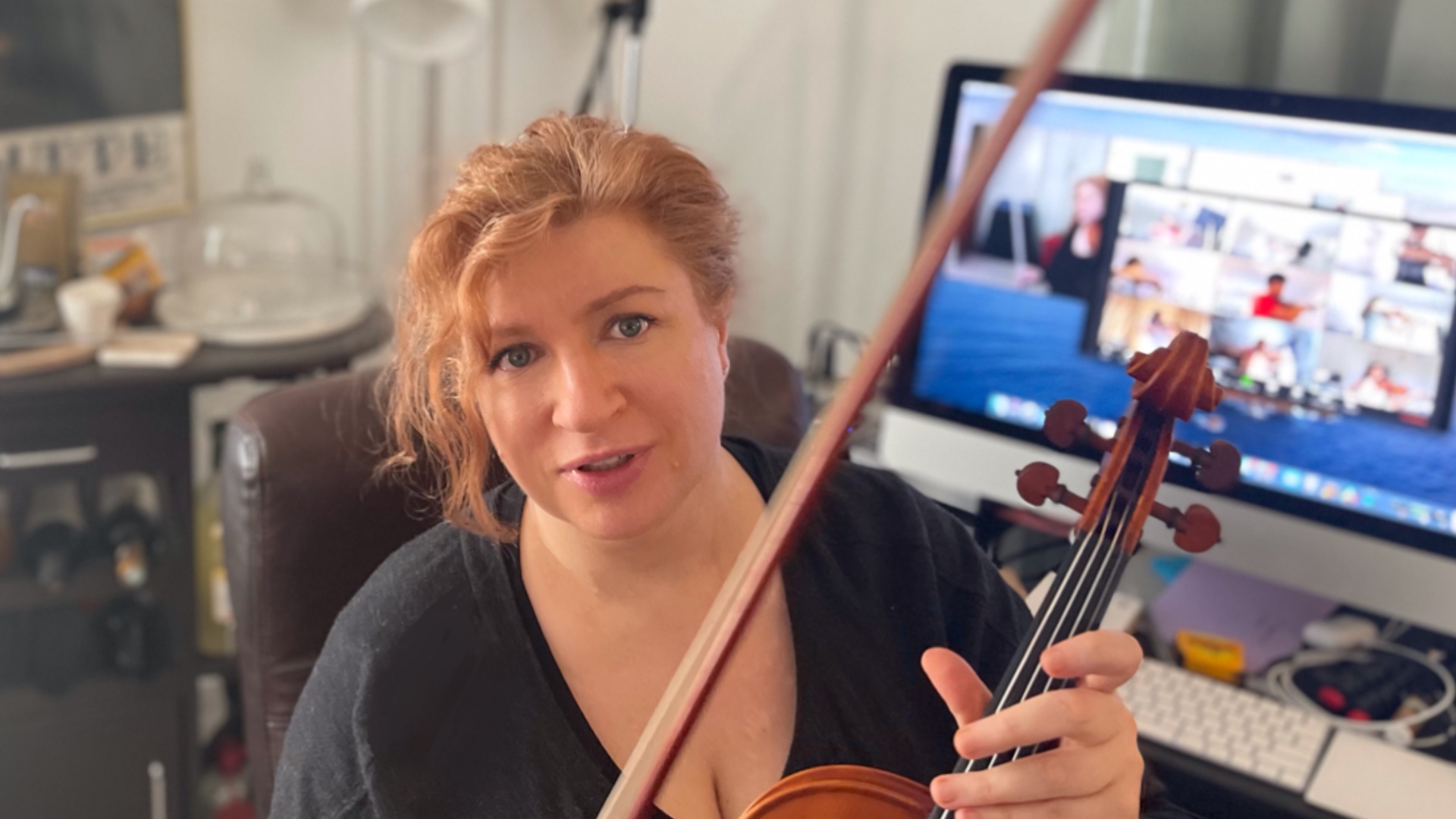
Whether you share your home with family, roommates, 4 parakeets, perhaps a very demanding chihuahua, or all of the above, when one is at home, especially now with many living under the same roof 24/7, going to school in their bedrooms and using kitchen counter as their office, confronting distractions and being interrupted is unavoidable.
The moment you pick up your instrument and begin to play, there is always a phone call, someone yelling, doorbell rings, and your involvement is integral anywhere and everywhere other then with your instrument in hand in your practice space. If only you could make someone a quick sandwich, and maybe a few other little things that of course take no time at all, or lend a pair of pliers to a neighbor, urgently find a homework assignment that was due yesterday, or clean a mess that was left by one of the four legged family members. And when you finish saving the world, re-energized by all you have just accomplished you can joyfully prance into your practice space and immediately begin playing beautifully, to the utter joy and bliss of all those around you!
No? Really?
Well, if you aren’t supercharged by the sort of activities described above, and if those near you aren’t exactly on board with your desire to have time with your music, read on for a step by step guide to how you can cope with realities, and possibly maintain your sanity :)
Step 1: Keep an interruptions log for a few days to one week
You’re practicing, writing, studying, working, exercising, and you need to be and want to be fully present and engaged while doing this. This is what you need to recharge, make a living, evolve, or feel balanced. Everything is in progress, when you suddenly get interrupted, for any reason, by anyone.
Enter: interruptions log! Whether you have a computer, smart tablet or phone nearby, open an app such as notes, or any other you may prefer, and write the following: “interrupted by so and so at such and such time and day, for the following reason while doing such and such a thing”. After you jot that down, if you have a chance, write a quick follow up: took such and such amount of time. Try to be as specific as possible about the time when interruption occurred. Also make sure to use the word “interrupted”, or another keyword representing an interruption, because you will need it later to search your notes. Of course you can use regular paper and pen for the purpose, but I find that having this information in digital easily searchable form to be most effective for me personally.
Step 2: Sort through the log and classify the interruptions
At the end of the few days to a week run a search for the word “interrupted” (or another word you selected) on every device on which you had jotted down the information, or review your handwritten notes, look for notes you took from your starting day on, and begin the sorting process.
First, identify which distractions could have been handled without your involvement (either by someone else, or by the person asking for your assistance). Identify what days and times these distractions occurred, and see if there is a pattern emerging in terms of time of day, duration, or any other factors (pre or post meals or sleep, behavior follows after a particular activity, etc).
Second, identify distractions where you were essential to the resolution of the issue and only you alone could have managed dealing with it, and determine if these tasks could have been performed by you 15-30 minutes later, several hours, or even days after the request. Just as in the previous case, see if patterns emerge in terms of days, times and duration.
Step 3: Tentatively Schedule potential practice session possibilities
Based on the information you collected schedule 2-4 practice session time blocks for the upcoming week which will have the duration you’d normally prefer, whether it’s 20 minutes or 4 hours, and some event-paired mini practice sessions (see prior blog post)
In setting up these sessions, besides considering your own schedule, consider your level of energy at that point in the day, your cognitive abilities (some people feel out of sorts first few hours after waking, while others are not at their sharpest later in the day), and see if you will be disturbing people around you at your chosen times. For the latter concerns, if you feel that your playing interferes with needs and preferences of those you live with or near, you may want to consider purchasing a practice mute. You can also try to plan practicing when nobody is home, but this approach is notoriously unreliable because other people’s plans can change and you don’t want to make you schedule dependent on someone else’s whims.
Step 4: Prepare
Get a stack of post-it notes and a couple of pens to be placed outside your door when you practice. Those living with you can use these to jot down anything that they need to communicate to you while you’re practicing. This way you won’t be disturbed numerous times while you practice, and you can get information about things that need to be taken care of after the practice session.
Get to know your phone: see what you can do to minimize phone calls, various alerts, emails and text messages, while making sure that you can still be reached in case of an emergency. There are a variety of possible settings you can try out to create a distraction free experience, but still have a peace of mind when it comes to those close to you. Once you find these distraction-avoiding settings, schedule a reminder for the approximate end of your practice session to set the phone back to its usual settings.
Decide on a note-taking method: paper, tablet, phone, computer. Maybe there is a particular app you like. Create format within which you can take practice notes, make plans, set goals, etc.
Step 5: Communicate
Let those who share your living space know that during the upcoming week you have scheduled practice times. Go over what these times are, and let them know that if something non urgent comes up, to please jot it down on a post-it outside your door or send an email, and that in case of an emergency you’re still reachable by phone or text, or by just knocking on the door. Also, “we’re out of cheese” does not qualify as an emergency :)
Express to them that you are working on integrating practice into your daily life not only next week, but for the foreseeable future, and would appreciate feedback, support, and if concerns of any sort come up, to please share them with you.
Step 6: Design a Pre-Practice Ritual
Since I was about 6 or 7, before violin lessons I remember going to a small cafe, and having a little cup of coffee (very weak and child friendly version) in a tiny espresso cup, with a piece of chocolate cake. It was a lovely ritual, happy and warm, and most importantly for me at that age, made me feel like a grownup :) During my Juilliard years the ritual became daily, and involved quadruple espresso and a blueberry muffin from a little coffee shop on my way to school, which I had while waiting in the mornings for the building to open so I could get a bit of practice done. Over time there have been some variations. For several years I made Turkish coffee with spices, and briefly I just had to have a cup of earl grey tea before playing. Currently my practice sessions are preceded again by a quadruple espresso, with a small piece of something sweet :) Despite the shifts in my preferences, the things that didn’t change about the ritual are that it always makes me feel happy and more focused.





Enter your e-mail below and get notified on the latest blog posts.